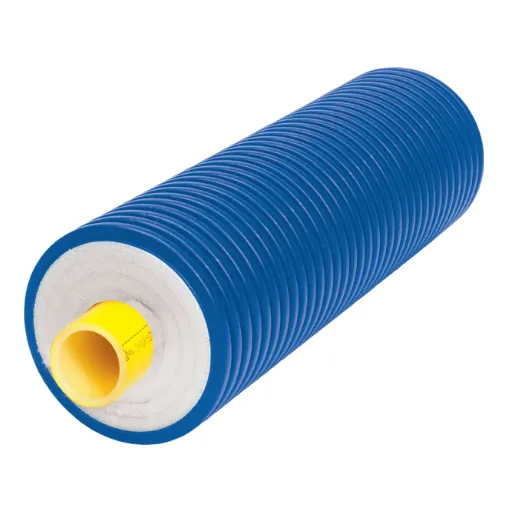Here is some information that will prove useful to you if you’re planning to lay PEX pipes underground. They are made from plastic and are quite flexible. They resist corrosion and hence are used in residential, commercial, and industrial areas. However, because of different methods, materials, and regulations that vary from place to place, one should have a clear understanding of how to lay PEX underground. This article covers the basics of laying PEX underground, looks into the unmatched benefits of the system, and discusses best practices for a worthy system. Whether you are an experienced pro or an amateur, the guide will give you all the technical know-how and important strategic comments to do this confidently.
Benefits of Using PEX Pipe for Underground Applications
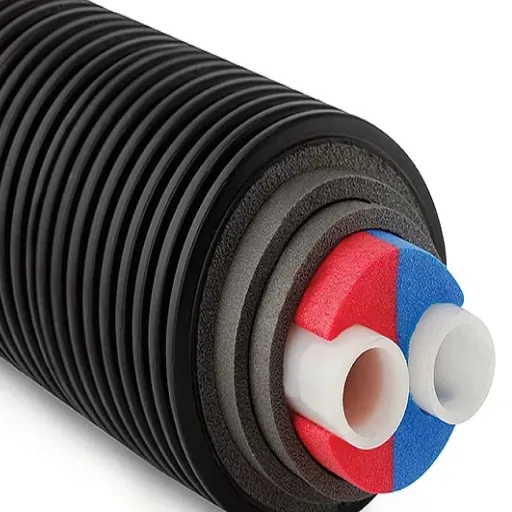
🔧 Flexibility and Ease of Installation
Inherent flexibility of PEX pipes offers a great advantage in below-ground applications, as it can accommodate various terrain types and complex layouts without subjecting them to excessive couplings or joints. PEX-fitted lines bend around obstacles and conform well to uneven surfaces, thereby limiting additional fittings and saving time in installation. Its ability to flex reduces the possibility of cracking and damage, hence greatly enhancing durability.
Being lightweight, PEX is quite easy to transport and handle, especially when greater pipe lengths are required in a project. The installation of long piping runs has fewer requirements in labor which directly posed improvements on efficiency. Also, the PEX pipe system decreases the array of tools needed compared to metal or PVC pipe systems. For connecting either, it involves quick crimping or expansion, unlike more demanding processes like welding or gluing that also require near-perfect conditions.
Once installed properly, PEX provides fabulous performance over a long period of time with little maintenance. That makes these systems an excellent and cost-effective option, either for contractors or DIY enthusiasts alike, saving on time and labor costs. PEX, by way of resistance to corrosion and other environmental factors, is undoubtedly the new embodiment of efficiency for underground plumbing, meeting requirements for both residential and commercial applications.
🛡️ Resistance to Corrosion
Corrosion resistance gave PEX tubing the edge over traditional materials like copper or galvanized steel. Metal pipes are subject to rusting or deterioration through prolonged exposure to water, minerals, or chemical contaminants. Being any other polymer, PEX has been crafted from cross-linked polyethylene. This particular material can withstand oxidation and the corrosive actions of almost all water compositions, retaining its structural integrity with passing time.
In addition, the chemical neutrality of PEX materials also safeguards against scaling, pitting, or buildup that may occur in metal systems. Should this happen, the flow of water can be compromised, efficiency can be lost, and repairs can be very expensive. Resisting degradation from such common threats guarantees that water pressure or quality shall remain unimpaired for the longest time, and, in turn, prolongs the lifespan of the entire plumbing network.
Corrosion resistance adds special appeal to PEX when pursued in areas with hard water or aggressive soil formations, where traditional piping materials would undergo accelerated rates of deterioration. This factor confers upon the material a reduced need for maintenance, thereby considering PEX ideal for both residential and commercial plumbing systems. Such an ability to resist aggressive environments certainly makes long-term planning easier and much more cost-effective.
💰 Cost-Effectiveness Over Time
Through its long service life, PEX piping presents greater cost-effectiveness while considering durability and ease of installation, and minimal maintenance. Being anticorrosive and anti-scaling means that such systems stay operational for decades without hourly attention or a battery of repairs and replacements. This protection against an hourly use cost means lifecycle cost reductions in favor of homeowners and businesses.
Such easy installation further improves the cost-saving potential. Preliminarily, the flexing of PEX reduces joints and connectors needed by one-third in comparison to rigid ones such as copper or steel, thereby reducing labor time and costs. Further, PEX being lightweight also entails less transportation cost, and it is simple to handle during installation.
PEX also reduces energy tariffs for hot water use. It retention heat more than that of metallic pipes because of its lower thermal conductivity, leading to less energy use and utility tariff. Long lifespan, coupled with ease of installation and energy efficiency, makes PEX a very cost-efficient option in any plumbing job, especially when measured over a period.
Installation Guidelines for Underground PEX Pipe
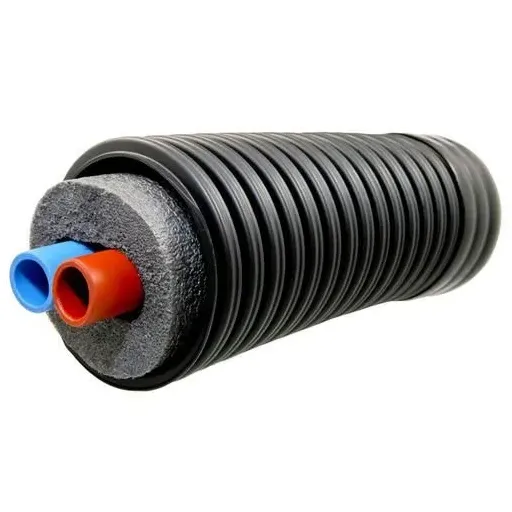
🛠️ Tools Required for Installation
- PEX Pipe Cutter: The cutter is used to make clean cuts on PEX tubing, necessary for proper fitting and glue joining in installation.
- PEX Expansion Tool or Crimping Tool: These tools are employed to ensure the secure joining of PEX piping, either by expansion or crimping of metal rings, depending on the system of fittings chosen.
- Deburring Tool: To deburr the edges after the pipe has been cut to prevent damage to fittings and proper assembly.
- Manifold System: A PEX manifold optimizes water distribution from one source to many locations, thereby increasing system efficiency.
- Pipe Insulation and Sleeves: These are necessary for PEX pipes in underground or exposed installations for protection against adverse environmental conditions.
- Shovel and Trenching Tool: To dig the required trench where underground piping will be laid, ensuring proper depth and slope as per local codes.
- Measuring Tape: For perfectly measuring pipe length and positioning of fittings with respect to material optimization and system design.
- Pressure Test Kit: Used to test for leaks between backfilling to make sure that all connections are secure and compliant with industry standards.
- Support Clips and Anchors: Assist in keeping the piping steady to prevent its movements and alignment throughout its operations.
- Protective Equipment: Gloves, safety glasses, and any other appropriate footwear giving full protection to the installer throughout the installation.
Together, these tools provide for a smooth, efficient, and code-compliant installation of PEX pipe and eliminate the probability of defects during installation as well as long-term performance. Proper preparation and tool selection tailored to project specifications are of utmost priority to guarantee the best results.
📋 Step-by-Step Installation Process
-
1
Planning and Designing: Start with the plumbing layout as per the project design documentation. Measure the pipe lengths required very carefully, with any allowances required for bends or connections. Check if the work complies with the local building codes and regulations to ensure approval for the project.
-
2
Material Preparation: Based on the application, choose PEX pipe material such as PEX-A, PEX-B, or PEX-C, based on the need for flexibility and durability. Cut the pipes to the pre-measured lengths with a pipe cutter that will create smooth and squared pipe ends, which are essential for leak-proof PEX connections.
-
3
Pipe Expansion or Crimping: Prepare the pipe ends according to the type of connection to be used. In expansion fittings, expand the pipe end with an expansion tool so the fitting may be pushed on securely. For a crimp-style connection, slide the crimp ring onto the pipe and position it in place.
-
4
Installation of Fittings: Attach PEX-type fittings to pipe sections prepared and ready-ended. Fittings should be inserted all the way, seated against the pipe stops. Using the appropriate tools, initiate crimping or clamping of tools evenly and tightly. With expansion fittings, time is allowed for the pipe to shrink back around the fitting to a secure seal.
-
5
Pipe Routing and Securing: Lay out the PEX pipes along the predetermined routes with a little bending radius and no unnecessary undue force on the material. Support or strap the pipes every 32 inches horizontally and every 4–6 feet vertically.
-
6
Pressure Testing: Pressure-test the installation before its acceptance to witness integrity. Pressurize the PEX system with water or air with reference to the pressure stipulated in the manufacturer’s instructions. Remain with the system for a minimum of 30 minutes, monitoring for leaks or fitting failures, or pressure drops.
-
7
Insulation and Final Assessment: Insulate the PEX pipe where upholstery is required to avoid heat loss or freezing. Carry out a comprehensive inspection of the installed system to validate the fitness of all connections, supports, and transitions to safety and performance standards.
This procedure assures a reliable and efficient PEX installation, where careful planning, proper tool usage, and industry standards are integrated for a durable output.
💡 Tips for a Secure and Long-Lasting Setup
✅ Using Approved Fittings and Tools
Always ensure to use fittings and tools that are specifically designed for PEX piping systems and meet industry certifications; this assures that the components are compatible and can undergo variations in pressure and temperature during operational service for a long time.
🔄 Maintain Expansion Allowances
Make sure to allow for the natural expansion and contraction of PEX pipes with temperature changes. Fasten the pipes with suitable clamps or hangers while still retaining enough movement to avoid any stress or damage to the piping system.
☀️ Avoid Direct Exposure to UV
Extended exposure to ultraviolet (UV) would affect the alteration of PEX material properties. If the pipe is not to be installed immediately, always keep it in its packaging, and if installed, make sure that the pipeline installation is shaded from the sun.
🔍 Pressure-Testing
Before the system is put on efficient use, conduct a pressure test, mostly according to the regulations set to enable the observation of any leaks and the rectification of weaknesses in the system.
🌡️ Monitor Operating Conditions
Ensure that the temperature and pressure within which the system operates are within the limits prescribed by the manufacturers; otherwise, this might cause failures and shorten the life span of the system.
🔧 Installation Planning for Accessibility
While designing the layout, make sure that access to important joints and connections is easy for their possible maintenance and upgrading in the future. This will reduce the chances of extensive repairs in the case of a malfunction.
💧 Considerations for Water Quality
Detect problems with water quality, such as high chlorine content or hard water, which can speed up wear out and shorten the life span of the PEX pipes, and incorporate water treatment measures where necessary to provide added system protection.
Such kinds of care for the PEX piping system further increase the life of the system while ensuring broad-based conformity to the safety and performance standards, as well as the newest state-of-the-art and technology best practices.
Maintenance Tips for PEX Pipe Longevity
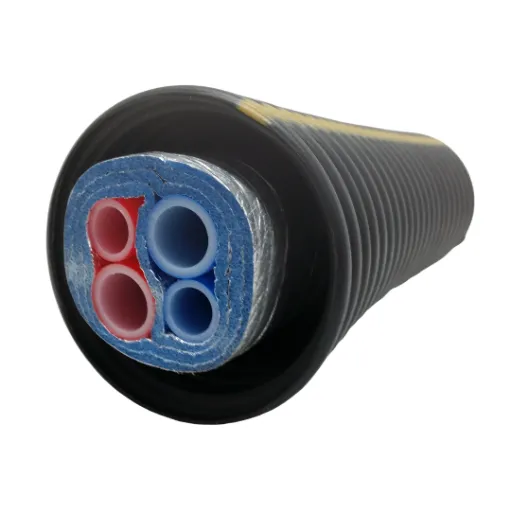
🔍 Regular Inspections and Upkeep
The results and longevity of a PEX piping system begin with an inspection to prevent any problems from progressing. Some inspection should be made on the joints, fittings, and connections for any leaks or damage. Loss of water can cause structural problems; hence, these points should be prevented. Be cautious where pipes might be under stress, either due to movement, temperature, or improper support.
Sediment buildup inside the pipes should also be monitored on occasion. Mineral deposits can reduce flow efficiency in due time. Testing for scaling might be appropriate for hard water in your water supply. Periodic flushing of the pipes with a safe, manufacturer-approved solution could also be considered against such issues, thus ensuring maximum water flow and pressure.
Moreover, it is also imperative to keep a controlled environment around the piping systems. Install proper insulation and protective coverings to protect pipes from exposure to UV or extreme temperatures. The application of automated monitoring devices that detect pressure changes or leaks can serve as a modern maintenance method, accurate and providing real-time diagnostics in accordance with today’s industry standards.
⚠️ Identifying and Addressing Wear and Tear
These are considered different forms of wear and tear: corrosion, material degradation, and mechanical damage. Corrosion is a very common problem and may arise from a chemical reaction with the fluid inside the system or from environmental factors such as humidity, oxygen, and exposure to chemicals. Material degradation is posed by external surroundings, especially when it includes extreme temperature or UV rays, and mechanical damages arise as a high-pressure fluctuation or an impact force coming from outside the system.
To detect wear and tear efficiently, one must resort to the use of advanced nondestructive testing methods, including ultrasonic inspection, radiographic inspection, or magnetic particle inspection. These methods enable the inspection of piping internally and externally without interruption to the system operation. Beforehand, new-age sensors and IoT-enabled solutions can unobtrusively keep an eye on potential weakness, continuously checking such as wall thickness, pressure, and vibrations.
Wear treatment involves implementing targeted maintenance strategies to apply protective coatings for corrosion, to strengthen or replace corroded portions with advanced alloys or polymers, and to install dampers or supports to reduce mechanical stress. Further, predictive maintenance approaches, using machine learning and analytics, optimize repair scheduling by accurately forecasting the remaining useful life of components, derived from operational data. These treatments, considered together, will ensure the best reinforced long-lasting piping system according to industry safety and efficiency standards.
🎯 Best Practices for Extended Lifespan
A systematic approach to extend the operational service life of the severely critical systems and components involves consideration of the most advanced knowledge and technologies. Material selection could consider resistance to corrosion, thermal fatigue, and mechanical stresses using, for example, duplex stainless steels or advanced composites as the basic line for durability. The next step involves equipping all workplaces with real-time monitoring systems offering the possibility of continuous data acquisition with respect to pressure, temperature, vibration, etc., with anomalies or early tracking of degradation signs detected by machine-learning algorithms.
At the same time, the maintenance strategy, based on condition monitoring and prediction, should be rigorously observed, with intervention being made before any failure occurs. Further surface protection may be imparted by ACTs such as thermal spray coatings and epoxy linings, particularly in instances where abrasion or corrosion dominate. Energy-efficient design to reduce consumption from turbulent pressure losses serves to optimize long-term degradation.
Via the integration of these separate disciplines into a holistic asset management philosophy, industries can, thus, prolong the life of their systems while saving costs, enhancing efficiency, and meeting stringent industry regulations with sludge deposits on the environment as low as possible. Together, continuous innovation and data-based decision-making guarantee the long-term sustainability of their performance and reliability.
Comparison of PEX Pipe with Other Piping Materials
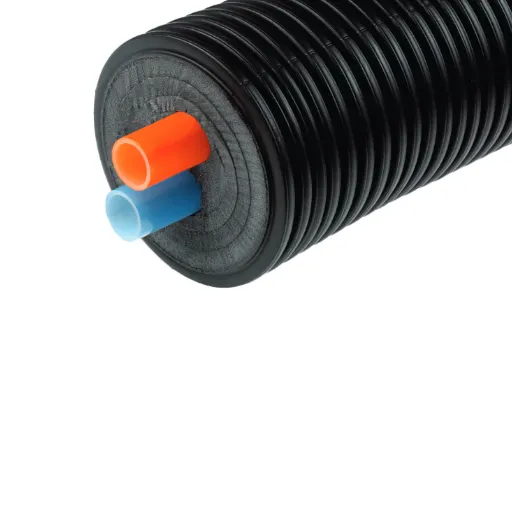
📊 Durability Comparisons: PEX vs. PVC, Copper, and Steel
PEX provides more flexibility and resistance to corrosion and freezing, unlike Copper and Steel, which do well at the very high-temperature and pressure range but are prone to corrosion and freezing.
| Material | Durability | Corrosion | Freezing | Temperature | Pressure | Lifespan | Cost |
|---|---|---|---|---|---|---|---|
| PEX | Flexible | Resistant | Expands | Moderate | Moderate | 50+ years | Low |
| PVC | Rigid | Resistant | Brittle | Low | Low | 50+ years | Lowest |
| Copper | Rigid | Prone | Brittle | High | High | 50+ years | High |
| Steel | Rigid | Prone | Brittle | Very High | Very High | 70+ years | High |
💵 Cost Analysis: Initial Investment vs. Long-Term Savings
Low first cost and long-term savings by easy installation and sturdiness are offered by PEX, whereas Copper and Steel will pay more up-front but go for a longer, and PVC is just the cheapest.
| Material | Initial Cost | Install Cost | Maintenance | Lifespan | Savings |
|---|---|---|---|---|---|
| PEX | Low | Low | Minimal | 50+ years | High |
| PVC | Lowest | Moderate | Moderate | 50+ years | Moderate |
| Copper | High | High | Moderate | 50+ years | Moderate |
| Steel | High | Very High | High | 70+ years | Low |
🔧 Ease of Installation Across Different Materials
When it comes to plumbing materials, various factors affect ease of installation, including the flexibility of the material, weight, tools required, and expertise needed. PEX is widely considered to be the easiest material to work with because it is lightweight and flexible; the pipe can be bent or maneuvered to pass through tight spots. Also, very few special tools are required to work with PEX, which reduces the labor intensity and installation time.
PVC is somewhat less flexible than PEX, but relatively easy to install. It is lightweight and may be cut and joined with basic tools and adhesive bonding techniques. Care, however, must be taken to properly align and make a good joint to avoid leaking.
Copper installation presents a medium degree of difficulty, along with moderate labor intensity; it involves accurate cutting, deburring, and soldering, so it calls for a skilled person with the right tools, including a blowtorch, to make sure the joints are secure. Being rigid, copper’s adaptability to intricate layouts is further limited; hence, many other fittings are often involved.
Steel, for its part, takes the crown for difficulty in installation mainly because of the extreme weight and rigid nature of the material. The ends of the pipes need to be threaded using specialized heavy-duty equipment, just to name one stage, and then major labor is required to secure the connections and handle the material. This heightened complexity translates into enormous installation time and cost.
Hence, it is good practice to take into consideration the ease of installation when choosing a material against the other traditionally accepted factors of cost, longevity, and application requirement.
Best Practices for Long-Term Durability of Underground PEX
⚙️ Proper Installation Techniques
Achieving maximum performance and providing long service life underground PEX piping are dependent upon the installation methods adhered to. First, trench preparation should be done at the required depth and width according to the requirements of local building codes and pressure ratings for the application. Sharp rocks or debris could pierce or score the pipe over time and should never be placed in the trench. A layer of sand or other fine-grained material is suggested as bedding to cushion the pipe against external damage.
Thermal expansion and contraction require special consideration as well. Though PEX is a flexible material, if handled improperly, its installation could create stress points. The provision of expansion loops or bends as part of the layout allows for such temperature changes. During back-filling, compaction around the pipe must be uniform, without exerting too much pressure on the pipe that may cause deformation or collapse.
The connections and fittings must receive special attention, with their installation ensured to avoid leaks or a loss of pressure. When mechanical fittings or brass connectors are employed, ensure their compatibility with the grade of PEX being used for installation. Finally, pressure should be applied for testing after installation-mostly hydrostatic or air pressure under prescribed limits-go verify the system integrity before coming into operation.
Adhering to such technical measures, combined with all manufacturer and code requirements, increases the trustworthiness and efficiency of underground installations of PEX.
📅 Scheduling Regular Maintenance Checks
Scheduling regular maintenance checks for your PEX-based plumbing system is one of the critical procedures for its longevity and performance. During the check, the installations, joints, or connections shall be thoroughly inspected for any signs of deterioration, corrosion, or seepage. I then check the system for any discrepancy in pressure or temperature since sudden variations point to hidden problems therein. Regularly, the system is checked and repaired to prevent the problems from growing into big issues, which usually means huge repair costs.
I also check the insulation to ensure it is in place, especially for underground installations or for exposed applications, as adequate insulation is the key to keeping exterior conditions from seeping into performance criteria. The water quality testing comes in because impurities or minerals can affect the PEX pipes’ life expectancy down the line. Each check is based on the manufacturer’s recommendations or relevant building codes, setting a reliable framework within which to conduct an exhaustive maintenance procedure.
When each check is recorded in a file and maintained, a detailed maintenance history emerges, easing the process of future diagnostics and system upgrades. So, this is an approach that really pays off in cementing the system’s performance in legal regulations, operational standards, and health safety requirements. Regular checks and timely remedial work when required shall maintain the efficiency and safety of any PEX-based setup.
Frequently Asked Questions (FAQ)
❓ What exactly is PEX pipe, and how is it installed underground?
PEX pipe is a flexible, somewhat resilient material constructed from cross-linked polyethylene and utilized in various plumbing applications, such as underground plumbing. Because of its flexibility, PEX pipe can expand and contract with temperature changes, thus functioning well in situations where more traditional piping may buckle. Underground installation of PEX is mostly popular for heating systems, such as those linked to an outdoor boiler.
📏 How deep should one bury PEX pipe?
When placing PEX pipe underground, it should be buried deep enough so that activities at the surface cannot endanger it. Usually, it is buried anywhere between 18 and 24 inches, depending on local soil conditions and climate. This would protect the pipe from brittle materials and prevent freezing during adverse cold weather.
🏠 Is it possible to insulate a PEX pipe above ground?
Yes, underground insulated PEX is available and highly recommended. Installing underground insulated PEX will help prevent freezing and maintain the heat system’s efficiency. The insulation reduces heat loss in the subsurface areas through which the pipe runs.
⚠️ What sort of trouble could one encounter while installing PEX pipe underground?
Leakage, damage from roots, and corrosion caused by unsuitable soil are among these problems. To prevent these problems, great thought needs to be given to the installation, and all local codes should be followed. Pick the right PEX pipe that is corrosion-resistant.
🔧 How is underground PEX pipe installed correctly?
Installing underground PEX pipe successfully stems from careful planning and execution. Select the correct type of PEX, such as PEX-A or PEX-B. Dig a trench to the correct depth with a base that is smooth and free of any sharp objects. Place the pipe, cover it with clean fill, and carefully backfill the trench afterwards so that it goes like clockwork.
🧪 Should the system be tested after the PEX installation?
Yes. Testing after installing your underground PEX pipe will guarantee no leaks within the system and ensure the system functions properly. This step is very important to uphold the integrity of your heating system and avoid any future complications.
🔄 What is the difference between PEX-A and PEX-B in underground applications?
PEX-A and PEX-B are two commonly used forms of PEX used in plumbing. For installation, PEX-A is generally more flexible. PEX-B, however, is considered better because it resists cracking, and hence, is better suitable for underground installations. Your choice between the types of PEX depends on your individual installation requirements and on soil conditions.
📋 How can one ensure maintaining local code compliance while burying PEX pipe?
In order to maintain local code compliance in the installation of PEX pipe underground, one should consult with the local plumbing authority about regulations on depth, insulation, and materials. Adhering to these guidelines will allow for a smoother installation and well avoidance of potential complications.
💧 Is it possible to use Underground PEX pipe for water line applications?
Yes, indeed; it is possible to bury PEX pipes with water line applications. Due to its corrosion resistance and flexibility, it would prove very convenient for underground plumbing applications, including water supply lines. However, every time, always make sure the proper depth is maintained and the local regulations are adhered to to avoid freezing or any looming issues
References
- Experimental Analysis of the Performance of a Geothermal Heat Exchanger
The study looks at the performance of the PEX pipes in geothermal heat exchangers. - Cross-Linked Polyethylene Pipe: A Comparison of Manufacturing Processes
This dissertation looks into manufacturing processes and applications of PEX pipes. - Numerical Simulation of Solar Thermal Energy Storage Underground
This paper deals with the underground energy storage system using the PEX pipes. - Thermoplastics Piping Handbook
This handbook discusses PEX pipes in the context of thermoplastic piping systems. - Designing a Bioshelter for Worcester Schools
This report deals with the installation and insulation of PEX pipes in underground systems.



